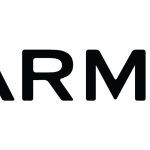Problem Solving Bird Dogs: What to Do When
So, I have had my pup for over a month now; he is a pointer 13 weeks old today. I have been working with him, socializing, he’s learning his name, learning no, taking him into the field. My question is, I have also been exposing him to pigeons, which get him fired up, letting them fly, he chases, letting him smell them etc. I started putting birds in the grass/fields and allowing him to find them, which he does, and I then will hold him back, which usually causes him to point; I walk in and flush the bird, and he chases it. My biggest question, am I jumping the gun at this age? Are these exercises okay? Should I use a launcher to teach him to point? It’s my first pup, and I just want to do him justice.
A new puppy, first and foremost, needs to learn to be a good citizen in the house. So, all the socializing and basic commands are mandatory – along with house breaking and crate training. Then we are confronted with all the specialized exposure and training that a bird dog needs.
In the scenario presented above, there are two issues that need to be discussed. First is which training activities are appropriate for a young dog; and, second, when should you institute them. One of the biggest problems for people with a pointing dog puppy is they often want things to progress quickly. There are often anecdotal descriptions of puppies practically pointing in the whelping box as well as pictures and videos of very young puppies pointing in the field. Many come to think that every well-bred pointing dog puppy should do the same. Actually, this is usually not trained behavior. It is what we get after many generations of selective breeding to develop dogs with lots of natural pointing instinct. It’s a good thing, but if your puppy is not quite that precocious you shouldn’t worry.
With puppies I raise here at the kennel, we often see them pointing very early, but it is not in a controlled situation with a planted bird and a checkcord. Most importantly, if they don’t want to point at three months or any time before, I think they’re ready for more formal training, I just don’t worry about it. There’s plenty of time for that later. Early pointing is on either wild birds or quail that are running around unrestrained and with as little human scent as possible on the quail. I’ll often fly quail out directly from one of the johnny houses without handling them. Then when I come through with the puppy or puppies, I let them find the birds on their own or not. If they miss the birds, I don’t stop the pups and try to lead them into the birds. After a few sessions of finding the loose quail, you can see the light come on in most puppies and they’ll start hunting for them. I think this is much more beneficial than being led into a bird and forced to point by being checked up with a rope or restrained in some other way. There will be plenty of time and opportunities to staunch them up later in their development.
The activity that I think is most valuable when you first get a young puppy is teaching him to go with you on a puppy walk. Everybody from Bob Wehle to Ferrell Miller (although Ferrell gets up on a horse) have lauded the puppy walk over the years. Among the horseback handlers, the term “flocking” has been applied to this activity. The primary objective, whether you’re on foot in the woods or in the saddle on the prairies, is to instill into young dogs that they need to keep track of you and go with you. I’ll do this with whole litters starting shortly after they are weaned, and continue doing it until they get to the point where I am spending more time keeping track of them then they are of me. That’s the point where I’ll start moving toward more formal yardwork with a checkcord and, ultimately, an e-collar. But this is just for handling and has nothing to do with birds.
Timing is the hardest part to define here. When to do what and then proceed to the next step befuddles many amateur handlers. They often don’t have enough experience with enough different dogs to be able to read a puppy’s progress and seamlessly move on to the next step. Anyone who suggest a specific universal timeline should be suspect. Even the puppies within a litter will progress at different speeds. Some will seemingly break out on their own before they are a year old, and others will be hard to finish before they reach maturity. I’ve worked with dogs that have needed a spike collar and a firm hand to get them to point at all, and others that were staunch from the get go. I’ve even had a few exceptional puppies that have had very little desire to chase and would stand and watch a pigeon fly away after only a few sessions. Again, this is genetics and not training; we do not break dogs steady to wing and shot when they are little puppies.
So, now the question becomes what formal training should you do and how do you know a pup is ready for it. The first indicator I look for is when a puppy on a walk starts defying me and running wherever he wants instead of going with me. I’ve seen 12-week-old puppies that were way too independent for my tastes, and I’ve had dogs that really never needed an e-collar for handling until they were well into their second year. These easy handling puppies were still collar-conditioned around six months of age and wore one whenever they ran in the woods; I just didn’t need to keep them to the front and going with me. The process for introducing the e-collar is probably a topic for an entire column at some point in the future.
After a puppy has been through the basic yard work and is somewhat under control, I will start using pigeons and a checkcord to get him pointing. At first, I always use tip up, non-mechanical, traps to hold and then release the pigeons. I don’t want to go to remotes right away as the added commotion of the trap and the flush can frighten a puppy and make him trap or even bird shy.
Once a puppy is boldly looking for the pigeons and at least briefly pointing them, I’ll switch to remote release traps. With the traps, I carefully watch a pup, and as soon as he indicates recognition of the bird’s scent, I’ll pop the bird if he moves toward it. The pup is allowed to chase at this stage of the game – bump and chase are allowed to continue until the pup finally gives in and points on his own. This may take a while, but I strongly believe that a pup allowed to begin pointing staunchly on his own will ultimately be more trustworthy than a puppy you forced (or helped) to point by restraining him.
So, to more directly answer the inquiry at the beginning of the article, you are probably moving too fast with bird work and should back off until your pup is older. Take the puppy on walks so he can learn to go with you while exploring the world. Work on handling and basic yard work like walking on a lead and handling with a checkcord. A pup needs a lot of positive reinforcement at this age and not restraint around birds. If a three-month-old puppy wants to point, that’s great, but use released quail or another bird that can walk around and flush to escape the puppy rather than a planted bird. Save the release traps for when the pup is pointing on his own and is used to birds flushing so you don’t create problems that will be difficult to overcome later.




